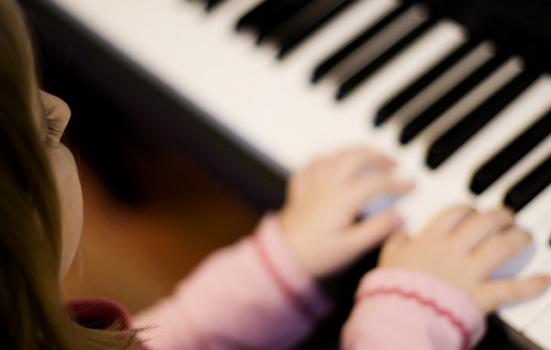The cost of tuition is still a major barrier to children from lower socio-economic groups learning to play an instrument, report concludes.

clappstar (CC BY-NC 2.0)
The number of young people learning to play a musical instrument has grown significantly over the past 15 years, with nearly seven in ten children in the UK saying that they currently play a musical instrument. Just over half of these are currently taking instrumental lessons. But despite these headline figures, the cost of music tuition continues to be a major barrier for many, and more than a third of children and young people say they have never had an instrumental lesson. The geographic picture in terms of access to, provision of and progression in music education, as well as in terms of the quality of teaching and learning, is mixed. Sustained, progressive music education tends to be the preserve of children born to wealthier parents, while children from lower socio-economic groups are significantly disadvantaged in comparison. This disadvantage follows them through life: adults who had private lessons as children and sat a music exam are much more likely to continue playing an instrument, and the higher the grade achieved, the more likely they were to continue learning.
These and a range of other findings related to teaching, learning and playing music in the UK have been published in ‘Making Music’, a report by the music exam board ABRSM, based on collaborative, cross-sector research by many leading individuals and organisations in UK music education. The previous Making Music report was published almost 15 years ago and although the latest findings flag up some issues of concern, many of the figures are very encouraging. The proportion of adults who have not played an instrument steadily increases with age, rising from 8% at 18 to 20 years old to 38% at 65 years and over, suggesting significant growth in access to instrumental learning opportunities in more recent decades. Children are learning to play a wider variety of instruments: as many play the electric guitar as the violin, more young people are playing two or more instruments, and technology is extending opportunities for creating music. More than one in five young people self-identify as playing an instrument but state that they have never had lessons, learning instead through informal routes such as peer-to-peer networks, through digital tools, or self-teaching in other ways.
Teachers’ experiences are also investigated and differences are found between those working in the private and public sectors. In general music teachers express great satisfaction with, enthusiasm for and commitment to their work, although in the public sector, pay rates have dropped and job security is low. Teachers for Music Services and at music centres express slightly lower levels of professional satisfaction – something the report argues may be due to the high political profile of, and expectation placed upon, Music Education Hubs, coupled with the downward pressure on local authority budgets and reduced central government funding. One respondent comments: “‘... I am only paid for the hours I work and holidays become difficult times. I am only on a temporary cover/supply contract with the Music Service that I am with and there is no hope of being made permanent with them. Effectively it is a zero hours contract – my hours could be taken away at any time in order to keep a permanent member of staff employed.” Almost half of the teachers surveyed do other paid work in the music profession, while one in five does other work unrelated to music.
The report proposes a series of steps to strengthen music education in the years ahead, including articulating a more coherent message about possible progression routes in musical learning for young people at all stages, which the report suggests would require “much greater collaboration and coordination among schools, private teachers, Music Services, community music and national organisations”. A priority for policy makers and funders should be to strengthen head teachers’ perceptions of music as an important contributor to school culture, outcomes and achievements for young people, and to target funding more effectively at supporting disadvantaged learners from social grades, addressing regional imbalances, and ensuring a more equitable supply of diverse instruments across the country.




